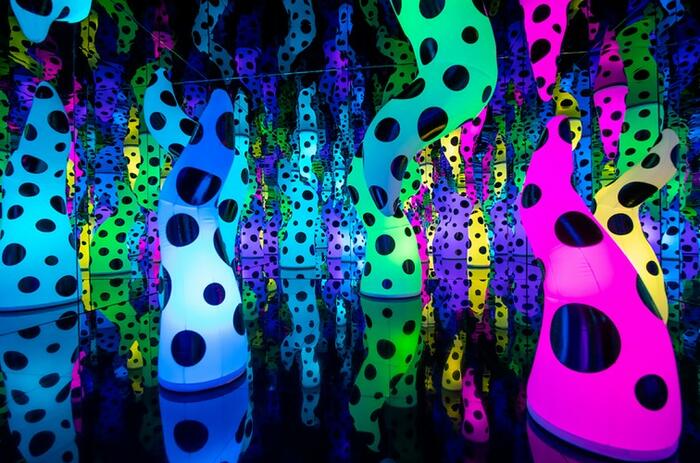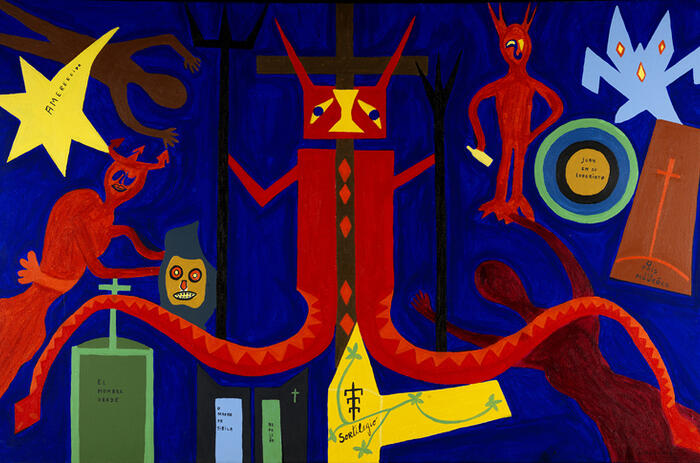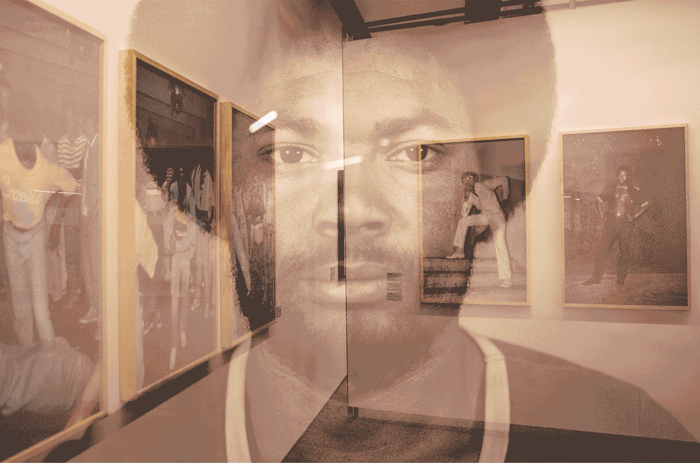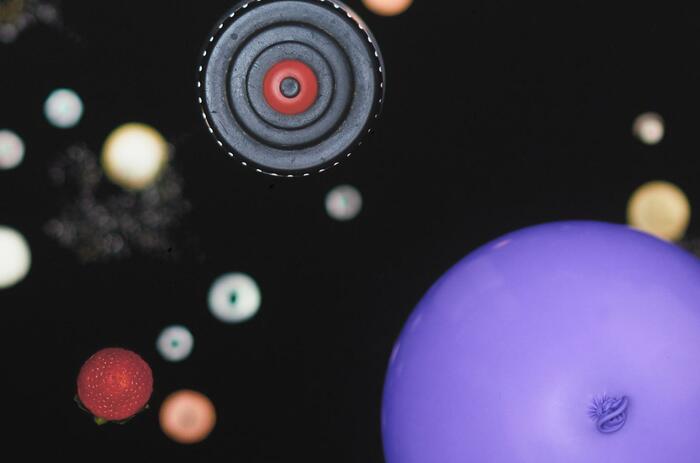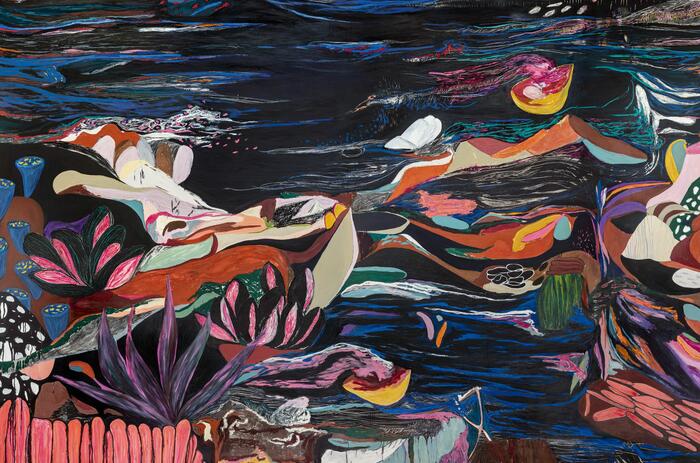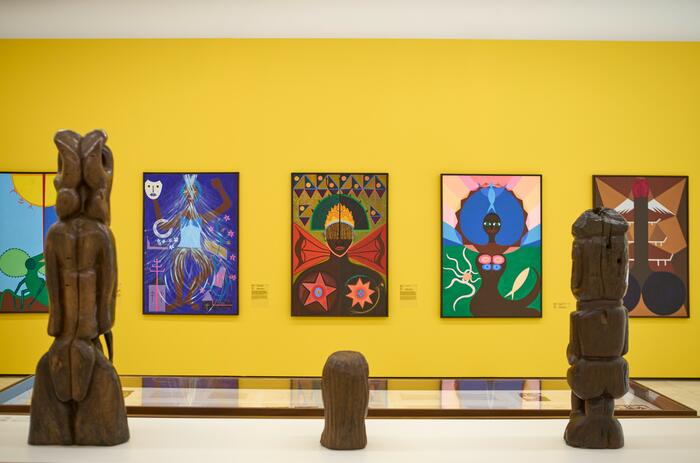INSTITUTO INHOTIM PRESENTS GALERIA YAYOI KUSAMA
Instituto Inhotim inaugurates a new permanent gallery dedicated to Yayoi Kusama. Galeria Yayoi Kusama features two of her works: I’m here, but nothing (2000) and Aftermath of Obliteration of Eternity (2009), both belonging to the Instituto Inhotim Collection.
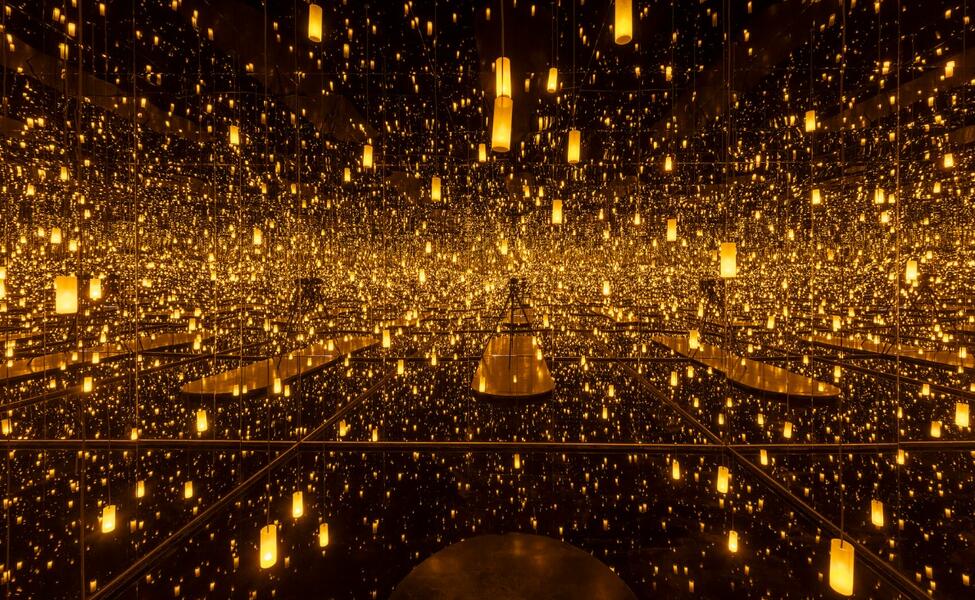
The architectural project of Galeria Yayoi Kusama was developed by architects Fernando Maculan (MACh) and Maria Paz (Rizoma). The gallery’s architectural proposal takes into consideration the protected space to house the installations and also the public, playing with the idea of waiting and lingering in a convivial space.
The landscaping project was carried out by Juliano Borin, Inhotim’s Botanical Curator, Geraldo Farias, from Inhotim’s Botanical Garden team, with contributions by Bernardo Paz. A multicolored tropical garden, with a touch of psychedelia, serves as inspiration for the planned garden where more than 4,000 bromeliads have been planted.
Aftermath of Obliteration of Eternity (2009) is based on the principles of the artist’s philosophy of self-obliteration, the desire to deny her existence by uniting with the infinite, as part of a whole. In this immersive environment, the proposal is for the spectator to be transported to a universe which is completely different from the outside, a transcendental cosmos. The appearance of the work evokes a continuous mirage illuminated by lanterns, which fades as our perception moves away from reality. In Japanese tradition, this type of lighting is linked to spirituality, a connection with the ancestors.
Fully illuminated by black light, a common home environment is taken up by countless bright colorful dots. The furniture and objects that make up I’m Here, But Nothing (2000) are commonplace in a home, such as a sofa, television, table, chairs, picture frames, rugs and other decorative objects. The fluorescent dots are adhesive stickers spread all over the walls, all over the objects, on the ceiling and on the floor. Under the black light (UV-A, ultraviolet), these colored dots sparkle at the viewer’s gaze, transforming the space, activating perception and, in a way, filling a void. The work can also be perceived as part of the artist’s concept of self-obliteration, in the sense of the dissolution of the spectator into the environment itself –which, for some people, may bring a sense of security for being in contact with recognizable objects and furniture, while for others it may bring a feeling more related to absence, as the title of the work suggests.
-
Galeria Yayoi Kusama, Instituto Inhotim, 2023. Photo. William Gomes.
-
Yayoi Kusama. Aftermath of Obliteration of Eternity, 2009. Mirror, Wood, plastic, acrylic, LED, aluminum. Photo: Daniel Mansur.
-
Yayoi Kusama. I’m here, but nothing, 2000. Phosphorescent polka-dot stickers, ultraviolet fluorescent lights, furniture, household objects. Photo: Daniel Mansur.
-
Galeria Yayoi Kusama. Instituto Inhotim, 2023. Photo: William Gomes.

